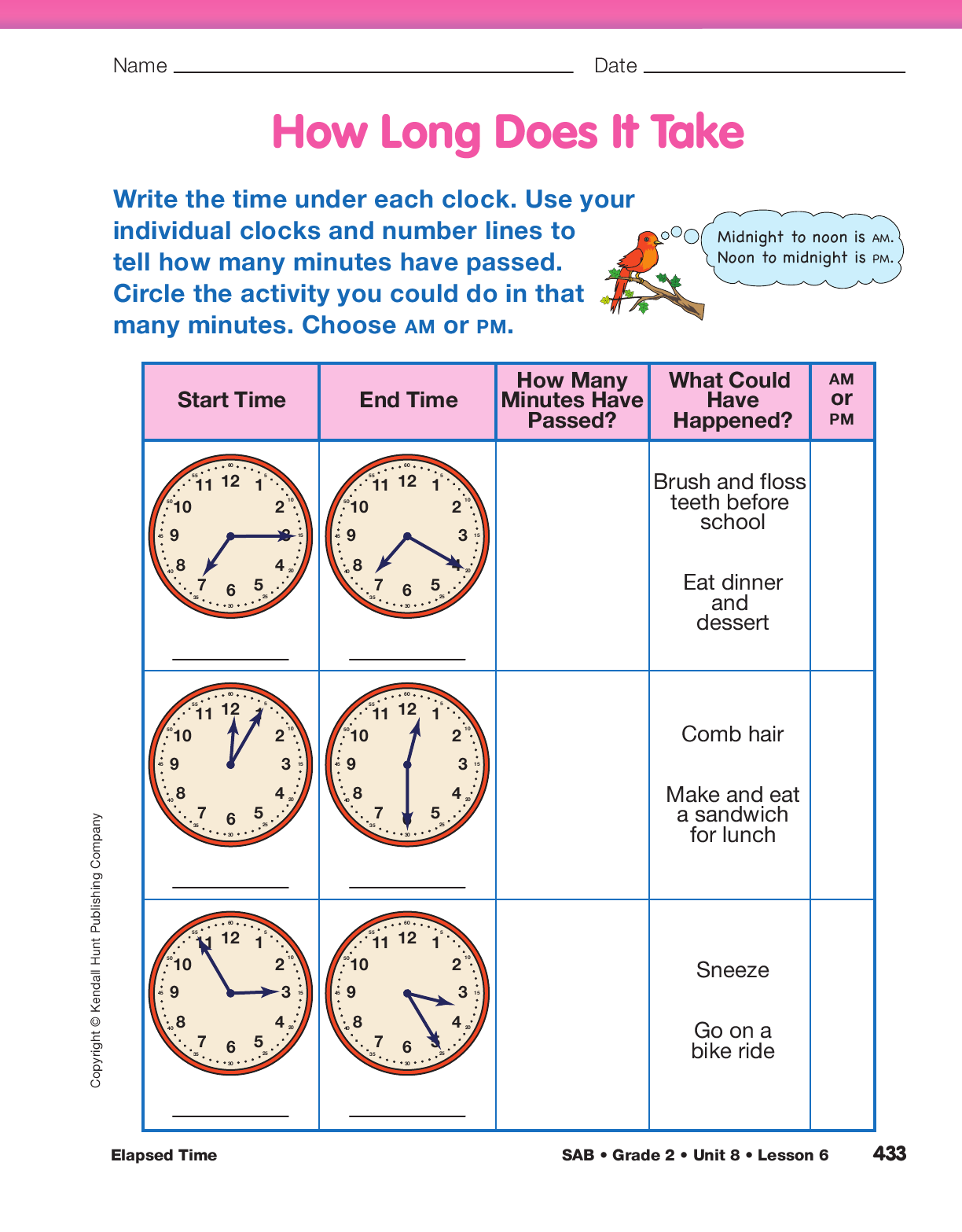To conclude the lesson, ask students to put their
heads down on their desks for one minute as you
time them. When they think a minute is up, they
should raise their hands.
After a minute has passed, ask:
- Was it difficult to know how long a minute lasted?
- Do you think a minute is a long time or a short
time? Why?
- Could you sing a song for one minute? (yes)
- Could you yawn for one whole minute? (probably
not)
- Could you sleep for just one minute? (probably
not)
- Could you do jumping jacks for one minute? (yes)
Tell students that there are 60 seconds in every minute.
- Do you think a second is a long time or a short
time? Why?
- What could you do in one second? (Possible responses: stand up, sneeze, blink my eyelids)
Read the book A Second is a Hiccup by Hazel
Hutchins aloud to help students understand different
lengths of time. In the story, the author explains
measures of time for a second, a minute, an hour, a
week, a month, and finally, a year.
After you have read the story aloud, ask:
- What can you do in a second? (Possible response: snap my fingers once)
- What can you do in a minute? (Possible response: wash my hands)
- What can you do in an hour? (Possible response: go to baseball practice)
- How many hours are there in one day? (24 hours)
Remind students that every new day starts at midnight.
Review that midnight is 12:00 AM and noon is
12:00 PM. From noon to midnight is PM. From midnight
to noon is AM.
To reinforce these concepts, ask:
- What is another name for 12 o’clock PM? (noon)
- Is it daytime or nighttime at noon? (daytime)
- What might you do at 12 o’clock PM? (Possible response: eat lunch)
- What is another name for 12 o’clock AM? (midnight)
- Is it daytime or nighttime at midnight? (nighttime)
- What might you do at 12 o’clock AM? (Possible response: sleep)
Refer to situations posed in the story to set the context
for a discussion about AM and PM.
Ask students if they would most likely do the following activities in the AM or PM:
- Jump rope at 3:00 AM or PM? (PM)
- Build a sand castle at 12:00 AM or PM? (PM)
- Watch the sun fade away at 8:00 AM or PM? (PM)
- Eat breakfast at 7:00 AM or PM? (AM)
- Watch the moon glow at 9:00 AM or PM? (PM)
- Pick peaches at 11:00 AM or PM? (AM)
- Stay sound asleep at 4:00 AM or PM? (AM)
Assign the How Long Does It Take page in the
Student Activity Book for students to complete individually.
Students will write the times displayed on
analog and digital clocks, determine how many minutes
have elapsed, choose an activity that could be
completed in that amount of time, and choose
whether it most likely occurred in the AM or PM.
Encourage students to use their individual clocks
and desk number lines to find the number of minutes
that have passed.
Use the How Long Does it Take page in the Student Activity
Book to assess students’ abilities to read and write time to
the nearest five minutes using analog and digital clocks [E9]
and solve elapsed-time problems involving time
measurements to the nearest five minutes [E8].














